Dry Your Garden Herbs for Casual Fall Decor
http://decor-ideas.org 11/11/2013 12:50 Decor Ideas
When the summer growing season comes to an end, preserve that precious remaining bounty of herbs for a beautiful indoor display that will keep on giving throughout winter. In addition to imparting culinary flavor, herbs can be turned into decorative bouquets that offer a homey, comforting feel and fragrance.

Herbs such as rosemary, sage, thyme, summer savory, bay, dill, marjoram, oregano, parsley and lavender work best for decorating, because of their low moisture content. Drying these plants indoors will yield good color and flavor.
If you hang the herbs upside down to dry, you'll get straight, firm stems that can then be displayed upright, like this bunch of lavender. Or you can turn fresh stems into a wreath. Cut young, pliable branches as long as possible. This rosemary wreath has five branches about 18 inches long that are tied together with twine. Over time the fresh stems will dry into shape.
Hint: If an herb's stems are too flimsy to be shaped into a wreath, use a bendable tree branch (like birch or willow) to give it stability.
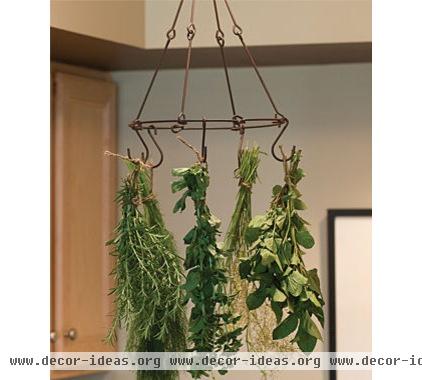
Herb & Flower Drying Kit - $14.99 Drying racks are a low-profile accessory that can hold multiple bunches during the drying process. Use them as functional tools or let them showcase the bouquets permanently.

Here a drying rack in the kitchen's primary work area offers access to the dried produce as well as visual inspiration all season long.
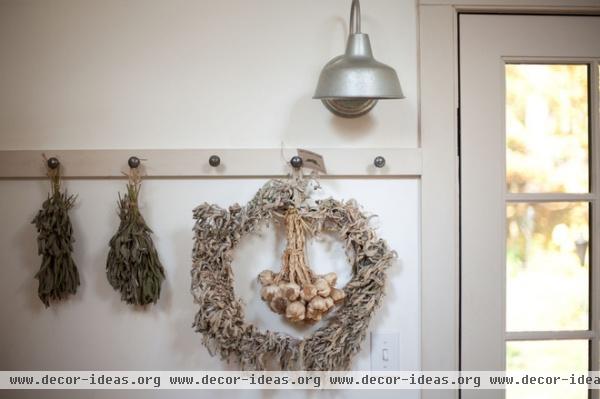
Many herbs come in different varieties. There are several types of sage, for example, in colors from creams and grays to greens, yellows and purples. Layer multiple types of the same herb, either in the same bunch or next to one another, for a more interesting exhibit.
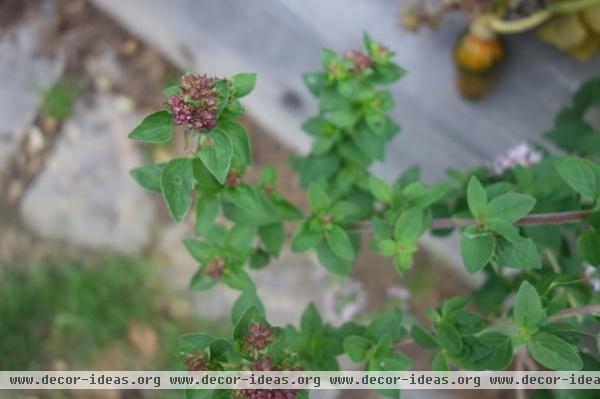
For the best cooking results, harvest herbs just before the flowers open. But if your intention isn’t to cook with them, but rather to enjoy their beauty, you can wait until they flower. Flowering herbs, such as the purple blooms of oregano and lavender, can give your decorations even more character.
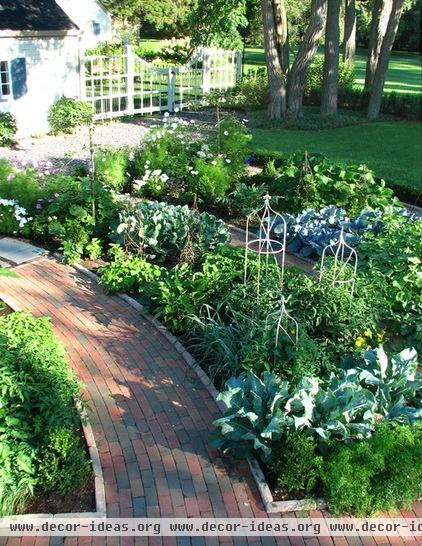
Cut the healthiest branches you can find, about three to four times the amount you wish to end up with for your bouquet, as the drying process will cause shrinkage — perhaps more than you might imagine.
Tip: Pick big bouquets for displaying and smaller bouquets just for cooking. Keep in mind that dried herbs tend to be about three to four times stronger than fresh, so a little bouquet will go a long way in cooking.
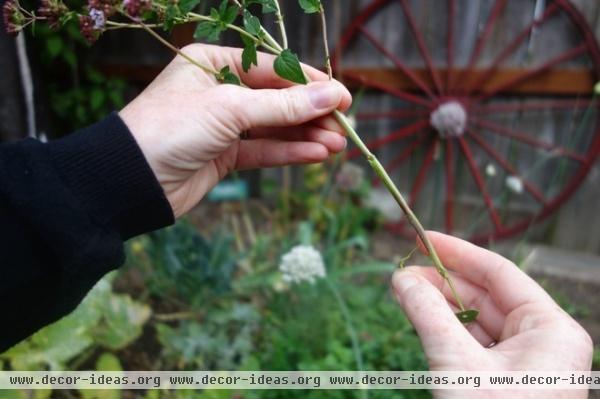
Strip the branches’ lower leaves. This is the time to take out any discolored or damaged parts; they won’t taste or look good. Inspect for bugs. Rinse in cool water and gently shake off the excess moisture.
Tie the bunch tightly with twine at the leafless base.

Initially tie only five to 10 stems or branches together to allow for ventilation. Once they've dried, you can combine these smaller bunches into larger ones.
Dried herbs and flowers over the dining table add a warm, rustic feel.

Herbs drying on pegs over this kitchen window act like an organic window treatment.

Exposed ceiling rafters are great places for hanging dried bouquets. Nails and hooks work great for this purpose.

If you prefer not to put holes in your walls or beams, tie herbs to a pot rack.

And don't think herbs need to be kept in rooms that revolve around eating and dining. Here they add interest and fragrance to a laundry-mudroom.
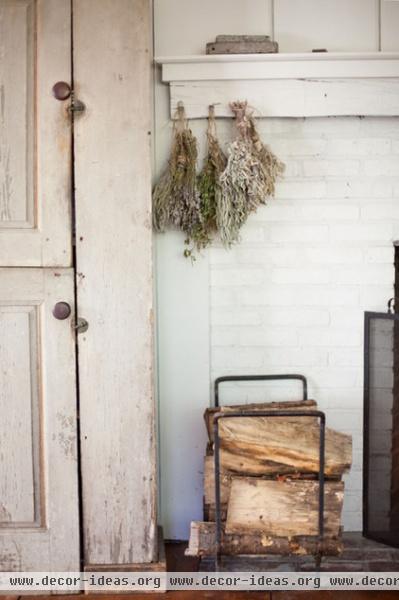
This home features an old-world scene of herbs hanging on nails near a fireplace.
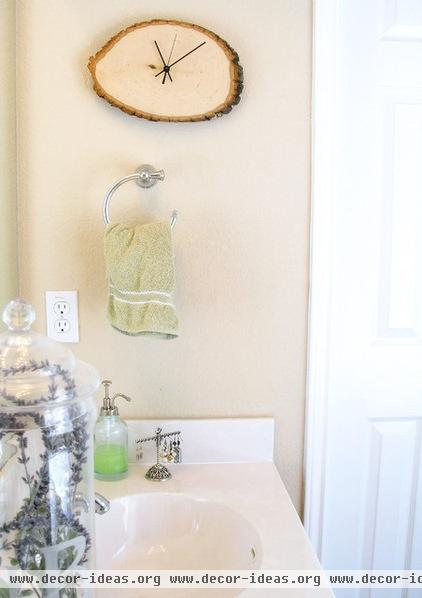
Dried lavender in a jar is a colorful display on this bathroom vanity.
Tell us: How do you decorate with the bounty from your garden?
Related Articles Recommended












